The Chinook salmon, commonly known as “Kings” or “Tyee” (Chinook jargon for chief), is the largest of the salmon and the iconic species of the Salish Sea. They typically grow to 3 feet (0.9 m) long with a weight of 30 lbs (13.6 kg), but can reach 4.9 ft (1.5 m) and 129 lbs (58.5 kg). Chinook support valuable commercial and recreational fisheries, and supply food for wildlife ranging from bald eagles to bears to killer whales. Born in freshwater, they spend several years feeding in the ocean before returning to their birthplace to spawn and die, their bodies providing essential energy and nutrients for the river ecosystems. Their population, however, is currently at 10% of historic numbers, and they were placed on the endangered species list in 1999.
In most Pacific Northwest rivers, dams and locks block the spawning path, and the salmon work around these barriers through fish ladders and other passes. One of these ladders is at the Ballard Locks in Seattle. This year’s Chinook spawn was trending to be one of the best in years, with visitors raving about the incredible number of salmon passing by the viewing windows.
We started an afternoon trip to the locks with lunch at the Pike Taproom in Ballard. After lunch, we checked out some mountaineering boots at nearby Ascent Outdoors. We’ll be making a trip to the South Pole this holiday season, and needed crampon-compatible boots for some day climbs during the trip.
The Ballard Locks, officially known as the Hiram M. Chittenden Locks, connect freshwater Lake Union with the saltwater Puget Sound through two locks that carry more vessel traffic than any other lock system in the country. We’ve contributed to those traffic numbers many times in both our boats.
But it’s not just vessels that frequent the locks. The waterway and adjacent Carl S. English Jr. Botanical Gardens are one of Seattle’s top tourist destinations, drawing more than one million visitors per year. Whenever we locked through, throngs of people crowded the walkways adjacent to the locks, taking in the show. Sometimes a large vessel would be passing through, filling the lock, but typically dozens of pleasure craft would be packed in and rafted up. Often one or more boaters would lose control of their vessel on the way in or out, generating a lot of excitement for those in the locks and those spectating.
When we arrived on a sunny summer afternoon, the Botanical Gardens were packed with people attending an outdoor music concert, with hundreds more elsewhere on the grounds. We hadn’t been ashore at the locks for decades, and it was fun to return as a spectator.
The fish ladder at the Ballard locks is unusual in that it directly connects saltwater to freshwater. Most fish ladders are well upstream in freshwater only. The ladder consists of 21 weirs that the fish can either jump over or swim between through an opening in the weir base. Near the top of the ladder, viewing windows allows visitors to watch the salmon as they work upstream. Dozens of people were at the ladder that day, cheering from above as a fish jumped over a weir, and taking in the scene through the viewing windows. We were impressed with the size and quantity of the Chinook, and really enjoyed our afternoon in Ballard.
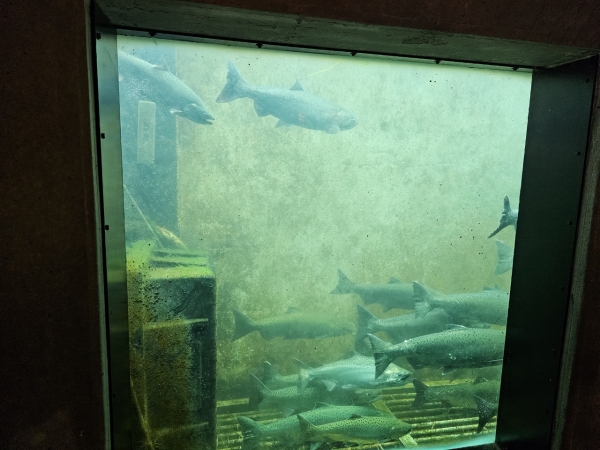
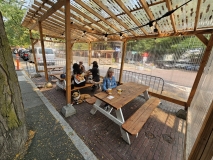


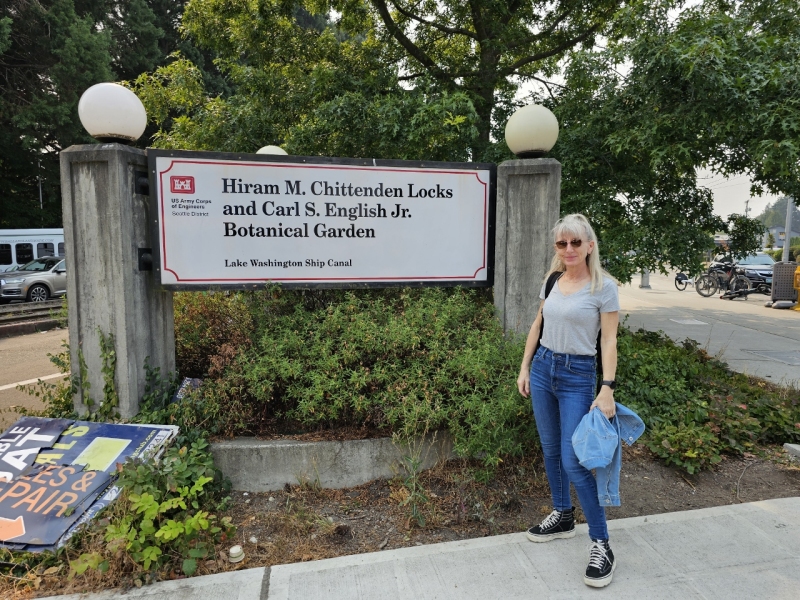
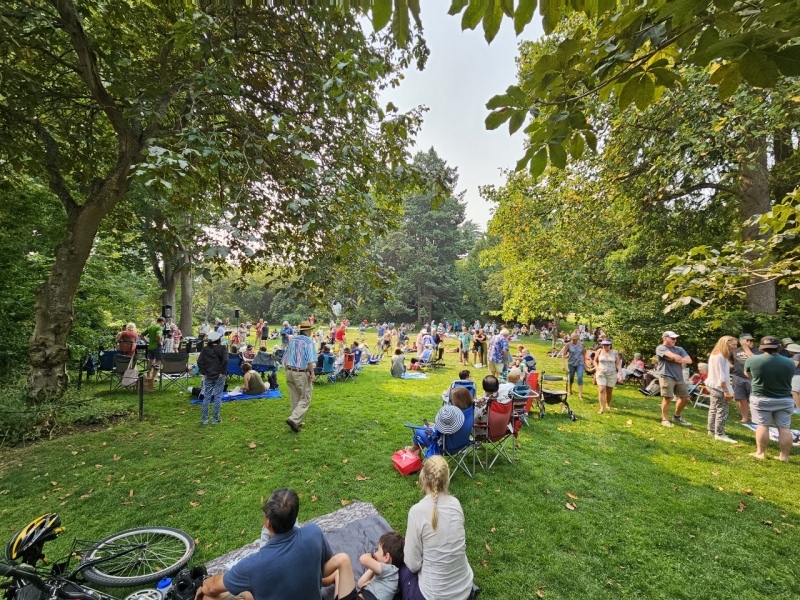
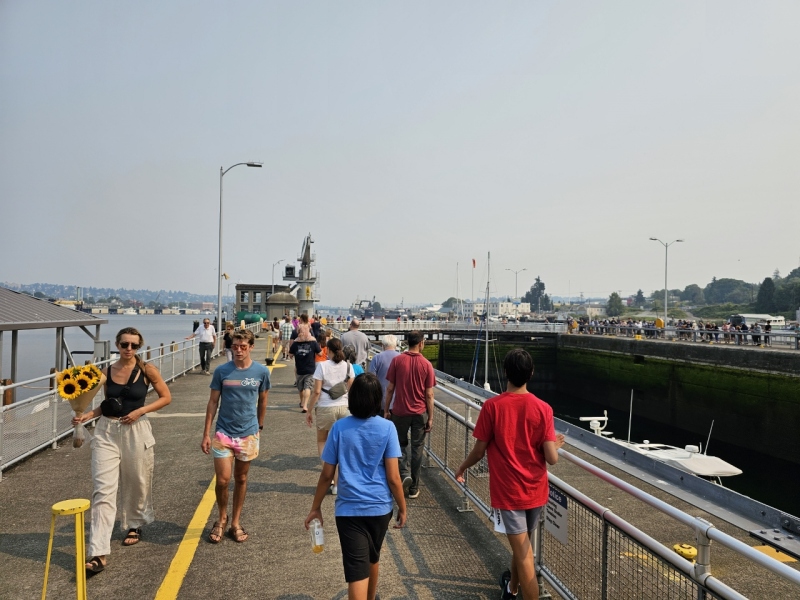
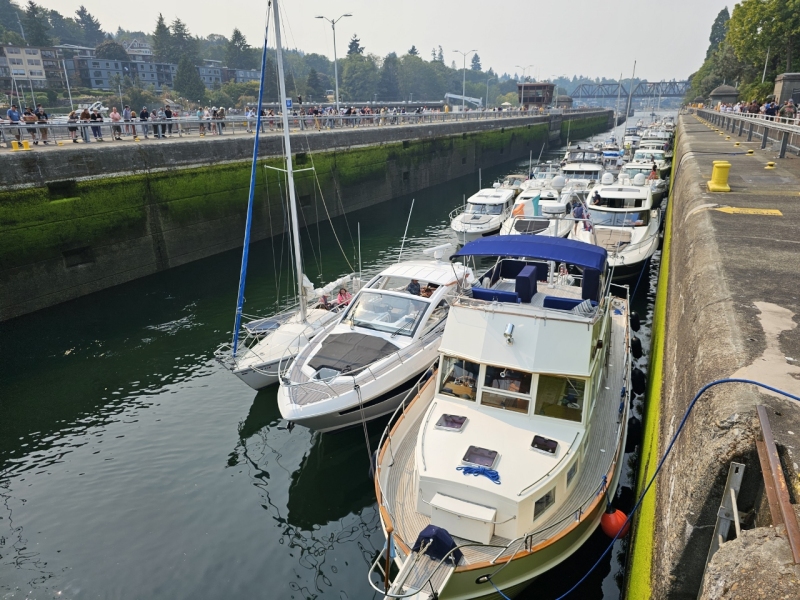

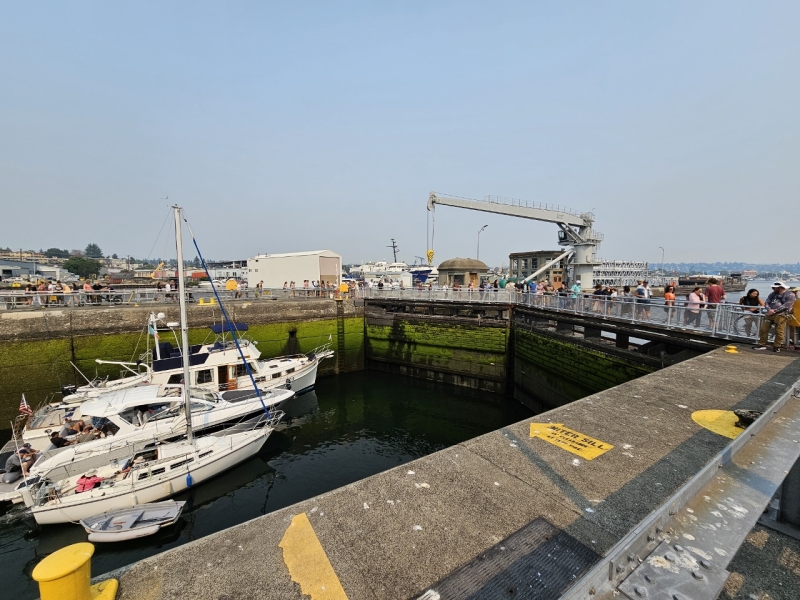
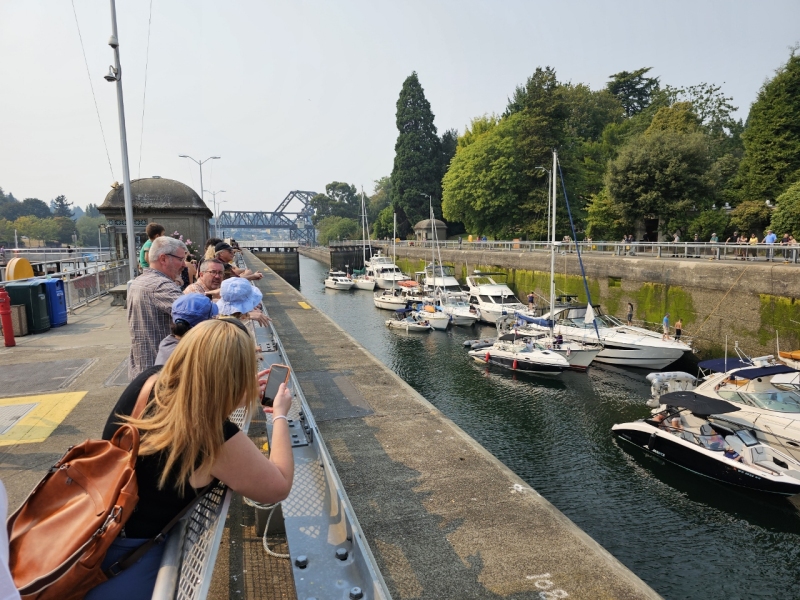


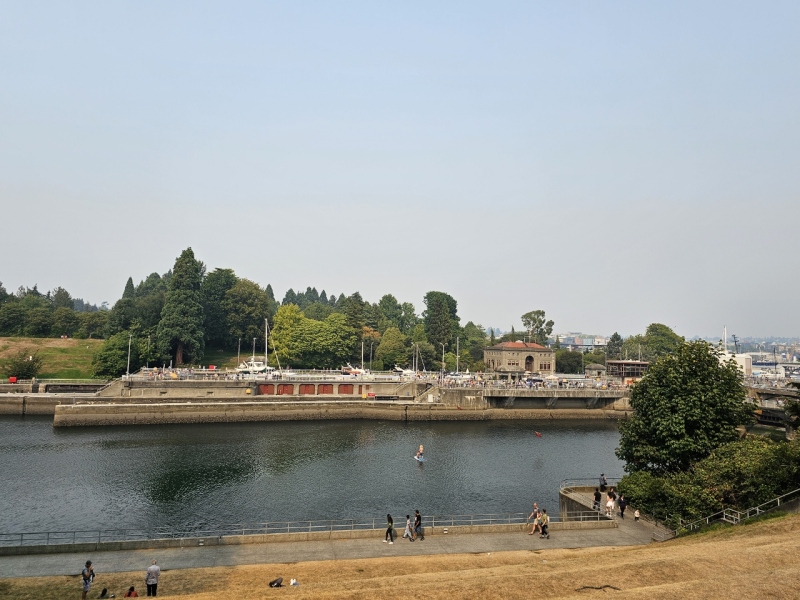

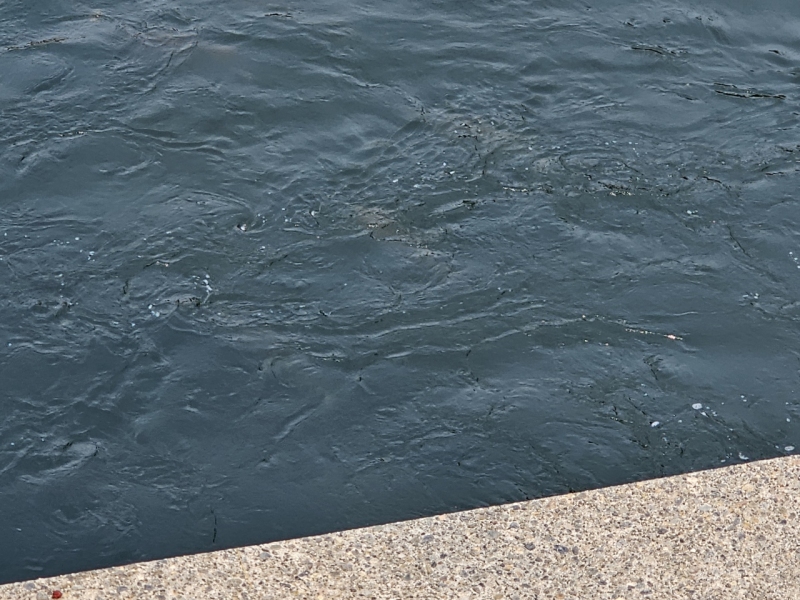

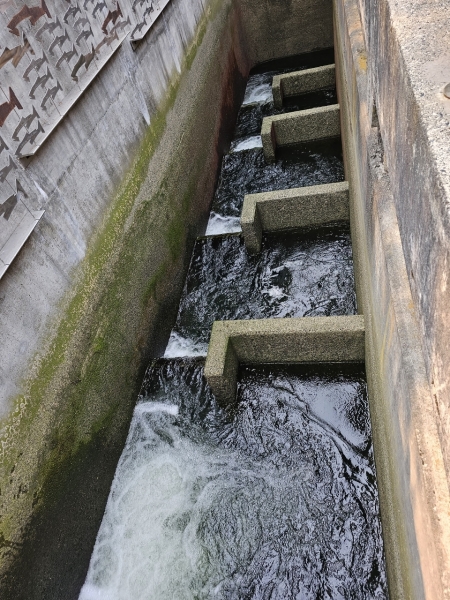
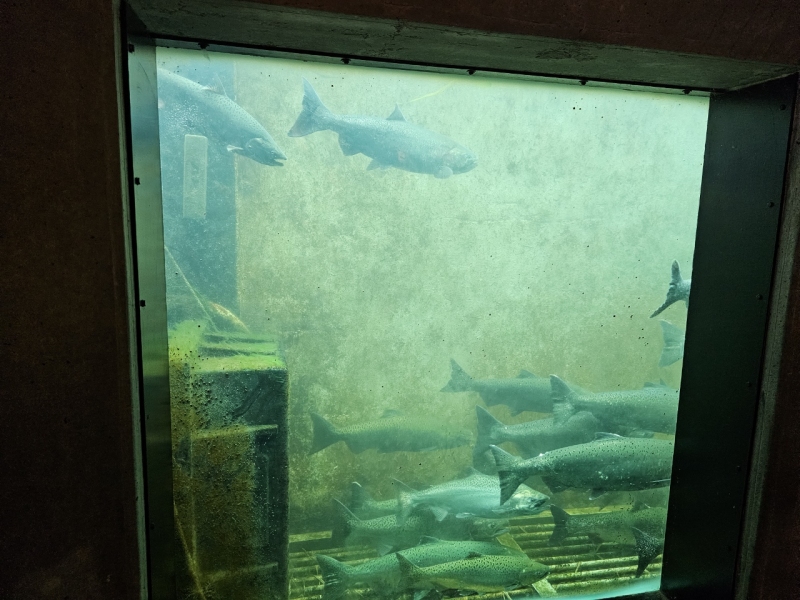
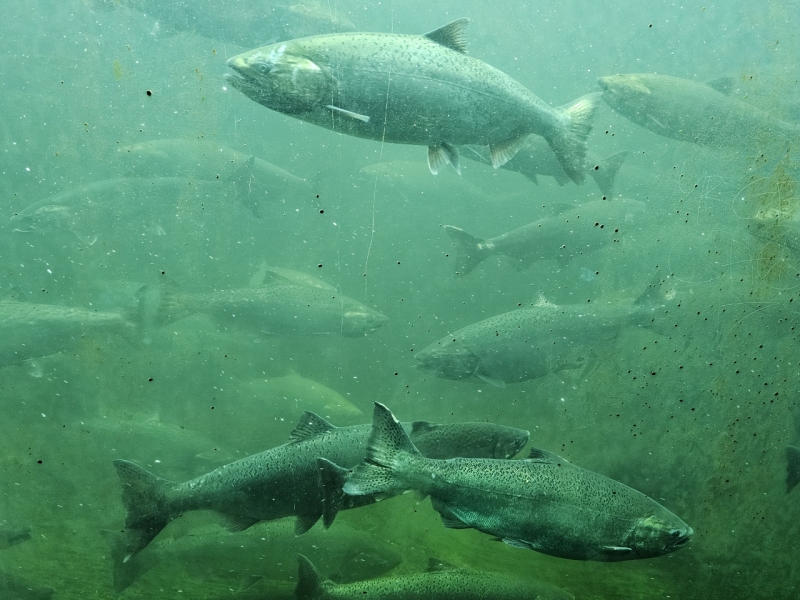
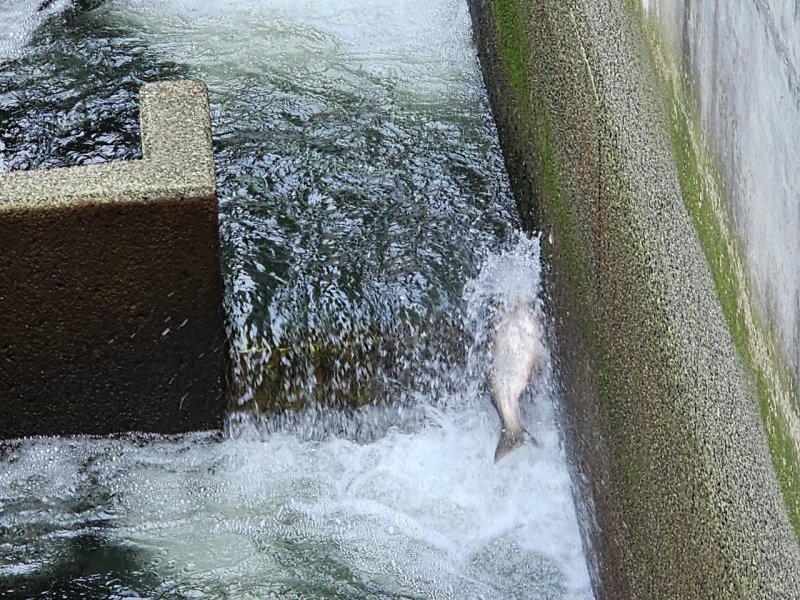
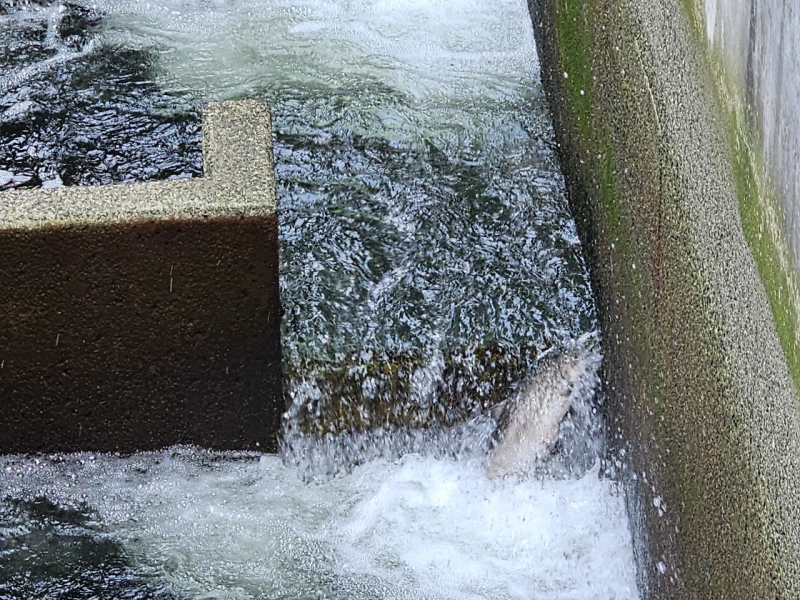
If your comment doesn't show up right away, send us email and we'll dredge it out of the spam filter.